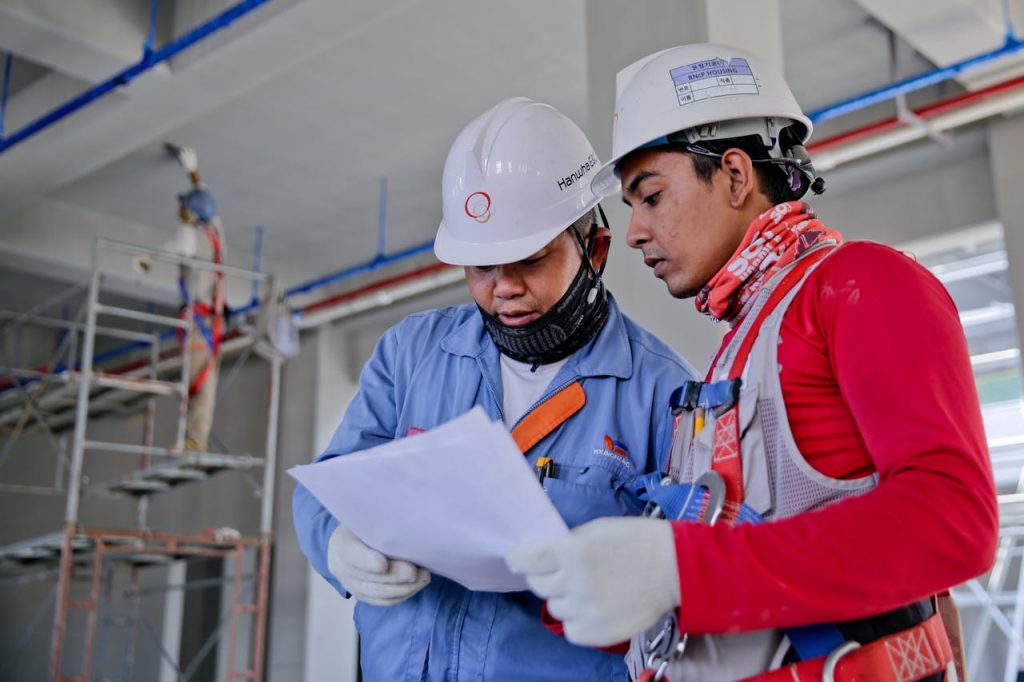A staggering 87% of companies worldwide report experiencing skills gaps or expect to within the next few years. This isn’t just a minor HR issue; it’s a fundamental challenge to business continuity and growth.
Today’s business environment moves at an incredible pace. Technological leaps and market shifts create unprecedented challenges. Staying competitive means having the right people with the right capabilities.
These gaps in capability represent one of the most significant barriers to success. They directly impact productivity, stifle innovation, and erode competitive advantage. For any modern business, pinpointing these shortcomings is no longer optional.
It is essential for any organisation that wants to remain agile. This guide will provide a comprehensive approach. We will explore why these capability disparities matter and offer practical strategies for addressing them.
Our goal is to equip you with actionable insights, backed by research. We want to help you take concrete steps towards building a more capable and resilient team of employees.
Think of us as your partner on this journey. We will cover current trends, effective identification methods, and powerful learning strategies. Let’s begin strengthening your organisation’s foundation for superior performance.
Key Takeaways
- A vast majority of organisations are currently facing or anticipate significant skills shortages.
- Technological and market changes make addressing these capability disparities urgent.
- Unaddressed gaps harm productivity, innovation, and a company’s competitive edge.
- Proactive identification is crucial for organisational agility and long-term success.
- This guide offers a practical, step-by-step approach to building a stronger workforce.

The Importance of Recognising Skills Gaps in Our Organisation
Business transformation efforts are hitting a significant and predictable wall. Understanding why these shortfalls matter is the first step towards building a more resilient company.
Understanding the impact on business performance
When our team members lack necessary competencies, the entire organisation feels the effects. Productivity suffers as tasks take longer or require rework.
Strategic goals can be missed, creating a domino effect. Team collaboration and customer satisfaction often decline. This directly impacts our overall business outcomes.
Consider the data. The World Economic Forum notes that 63% of organisations see capability shortages as the top barrier to transformation by 2030.
Furthermore, research reveals companies lose about 25 days of productivity annually from data-related shortcomings alone. These are not just numbers; they represent real setbacks.
Economic and technological influences on skills shortages
Several powerful forces are widening these divides. Economic pressures, like restructuring, can limit investment in staff development.
Simultaneously, technology evolves faster than traditional training can address. This creates a persistent lag in essential technical and soft competencies.
The table below summarises the primary effects of unaddressed capability shortages:
Consequences of Workforce Capability Shortfalls
| Area Affected | Immediate Impact | Long-Term Risk |
|---|---|---|
| Operational Output | Decreased productivity, more errors | Erosion of market position |
| Innovation Capacity | Slower adoption of new tools | Loss of competitive advantage |
| Employee Experience | Lower morale, higher frustration | Increased turnover rates |
| Financial Health | Increased costs for fixes & recruitment | Reduced profitability and growth |
Addressing these issues requires a clear view of both immediate and strategic impacts. It is fundamental for sustaining a high-performing workplace.
Current Trends in Skills Gaps and Workforce Development
The landscape of required capabilities is shifting at a breathtaking pace. Organisations everywhere are grappling with the rapid evolution of what it takes to succeed.
Let’s look at the forces driving these changes and the sectors feeling the greatest pressure.
Global market challenges and shifting skill needs
Recent data paints a clear picture of this acceleration. A Lightcast report found that 32% of the skills needed for the average job in 2024 were different from those required just three years prior.
This rapid turnover creates a significant skills gap for many companies. ManpowerGroup research supports this, showing that 74% of employers struggle to find the skilled talent they need.
This talent shortage is not evenly distributed. Some industries face more acute challenges than others.
The table below highlights the sectors experiencing the most severe shortages:
Industries Facing the Greatest Talent Shortages
| Industry Sector | Primary Challenge | Impact on Growth |
|---|---|---|
| Health & Life Sciences | High demand for specialised technical roles | Slows innovation and patient care delivery |
| Energy & Utilities | Need for green technology expertise | Hampers transition to sustainable models |
| Information Technology | Pace of new software and security needs | Increases vulnerability and operational delays |
| Transport & Logistics | Automation and data analytics integration | Reduces efficiency and supply chain resilience |
The role of technology and AI in reshaping roles
Technology is a primary driver of these shifts. Artificial intelligence, in particular, is transforming the nature of work.
It automates routine tasks while creating demand for new skills. This requires a fundamental rethink of many job roles.
A concerning statistic highlights one barrier: one-third of Americans lack basic digital literacy. This creates a fundamental gap for participation in a tech-driven economy.
The most valuable skills now include adaptability and critical thinking. The ability to collaborate with AI systems is becoming essential across all roles.
For organisations, keeping pace is no longer a long-term goal. It is an immediate, pressing need.

How to Identify Skills Gaps in Your Workforce
Finding the right path forward starts with a clear picture of your team’s current capabilities. We begin with a systematic skills gap analysis. This process compares the competencies our people have with those our organisation needs to thrive.
Conducting a comprehensive skills gap analysis
A thorough analysis answers several key questions. What specific knowledge is essential for each role? Do our employees possess these necessary competencies?
We also evaluate if our learning programmes can effectively support staff development. Understanding why some individuals already have critical skills provides valuable insights for building future training.
Gathering qualitative and quantitative insights
Effective data collection uses multiple methods. We gather hard numbers through surveys. We also seek rich, personal feedback.
Practical approaches include:
- One-to-one interviews with team members
- Small focus groups for collaborative discussion
- Anonymous surveys for honest self-assessment
We ask people what they feel they lack. We also ask managers about their teams’ needs. This multi-angle view creates a complete picture.
This evaluation is not a single event. Roles and required skills evolve constantly. Regular reassessment keeps our development efforts aligned with real organisational needs.
Implementing Tailored Learning and Development Strategies
Translating analysis into action requires a deliberate and strategic approach to employee development. This is where organisational education comes into play. It is the intentional practice of equipping our people with the knowledge to reach specific business goals.
Upskilling employees through targeted training programmes
Research highlights common areas for improvement. The Association for Talent Development points to critical thinking, management capabilities, and communication as frequent shortfalls.
A concerning 12% of staff feel they could achieve more but lack the necessary training. This represents significant untapped potential within our teams. Providing adequate knowledge directly boosts engagement and job satisfaction.
Our programmes must be holistic. Effective learning development blends formal sessions with practical, on-the-job experiences.
Leveraging organisational education for sustainable growth
We advocate for a mixed-method strategy. This includes mentorship, cross-team projects, and access to online platforms.
Stretch assignments offer real-world context for skill building. Reimbursements for certifications support self-directed growth.
Building modular content is a scalable solution. It allows us to educate diverse audiences efficiently. This is a core part of a robust training needs analysis.
The goal is a culture of continuous learning. We move beyond one-off events to foster lasting development.
Effective Methods for Employee Development
| Learning Approach | Primary Benefit | Ideal For Developing |
|---|---|---|
| Formal Training Sessions | Structured knowledge transfer | Technical and compliance-based competencies |
| Experiential Projects | Practical application and confidence | Problem-solving and collaborative abilities |
| Mentorship Programmes | Personalised guidance and support | Leadership and interpersonal talents |
| Self-Directed Learning | Flexibility and personal ownership | Specialised knowledge and adaptability |
Utilising Tools, Data and Partnerships for Effective Gap Analysis
Data-driven tools are revolutionising how we understand and address capability shortfalls. They provide the clarity needed to make smart investment decisions in our people.
This approach moves us beyond guesswork. We gain concrete evidence about where to focus our development efforts for maximum impact.
Data-driven approaches and modern assessment tools
Several powerful platforms now support a comprehensive skill gap analysis. Talent intelligence software offers deep labour market insights.
These tools analyse trends, job postings, and compensation data. They help us forecast future business needs.
Learning management systems (LMS) deliver personalised training. They track progress to ensure each employee develops the right knowledge.
AI-driven recommendations analyse individual learning patterns. This makes talent development more efficient.
People analytics tools measure programme effectiveness. They provide valuable insights into our return on investment.
Comparing Key Technology Solutions for Capability Analysis
| Tool Type | Primary Function | Key Benefit for Organisations |
|---|---|---|
| Talent Intelligence Platform | Analyses external labour market data | Aligns internal capabilities with market demands |
| Learning Management System (LMS) | Delivers and tracks training programmes | Provides scalable, personalised education paths |
| AI Recommendation Engine | Suggests targeted learning opportunities | Increases efficiency of development efforts |
| People Analytics Software | Measures programme impact with data | Offers concrete evidence of progress and ROI |
Real-world examples show these tools in action. Guild, a talent development company, partnered with Lightcast.
They integrated Skills Taxonomy tools to map employee capabilities against real-world demands. Pernod Ricard used similar data to build a new company-wide architecture for roles.
Collaborative efforts with academic institutions and industry experts
An education-employment divide often exists. Academic curricula can struggle to keep pace with rapid technological change.
Forming partnerships with universities and technical schools bridges this divide. We can help shape curriculum development.
This collaboration ensures graduates possess relevant, up-to-date knowledge. It creates a valuable talent pipeline for our workplace.
Engaging with industry experts provides further insights. These relationships keep our analysis grounded in real-world business needs.
Conclusion
Building a resilient organisation demands continuous attention to capability development. We can no longer afford reactive approaches in today’s fast-moving business environment.
Addressing capability shortfalls directly impacts productivity, innovation, and competitive advantage. Our journey has covered essential steps from comprehensive analysis to tailored learning programmes.
This work represents an ongoing process, not a one-time project. Regular reassessment ensures alignment with evolving business needs and technological advances.
Investing in employee development builds a more engaged, capable team. This strategic focus helps companies achieve their goals and adapt to future workplace changes.
While the challenge may seem significant, the strategies we’ve discussed provide a clear roadmap for meaningful progress. Organisations that prioritise this work today will be better positioned for whatever tomorrow brings.




